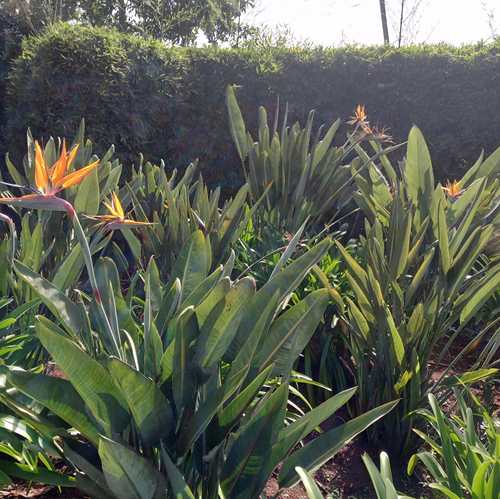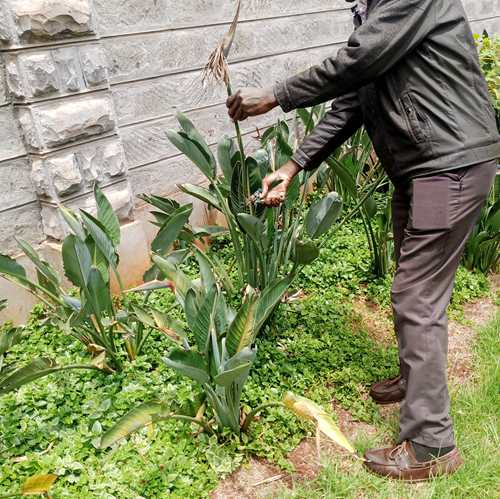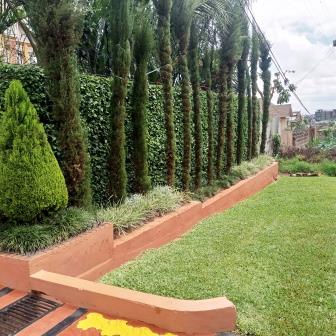Bird of paradise is a favorite of many gardeners . Rivalling the rose in popularity, its favored status rests on its use in arrangements where the leaves and flowers are much sought after. Besides bird of paradise are some of those ”easy care” garden plants that don’t need expert care to thrive.
The genus Strelizia, in which the bird of paradise species is found, consists of only 5 species which are originally from South Africa. Bird of paradise is noted for the clumping habits, which gives off an air of abundance as they multiply from the rhizomes.

Description of bird of paradise
Besides their clumping characteristic, birds of paradise have large, long -stalked leaves that may be oblong or lance -shaped. The bases form a trunk that may grow up to 10 meters (30 feet tall). Their flower clusters is produced from the leaf axis. It consists of horizontal, waxy, stiff and boat shaped bracts. At the top of the bracts, are crest -like flowers which are often in contrasting colors. Bird of paradise flowers last very long in arrangements and vases.
Types of Bird of paradise
Strelizia reginae, is the most commonly grown bird of paradise. It has oblong-lance shaped leaf blades, with rounded or tapered bases. The bracts are purple-orange flushed green and are borne between spring and winter. The flowers have orange or yellow calyxes and blue corollas.

Strelizia nicolai– Clump forming perennial that has oblong rounded or heart-shaped at the base. In spring, it bears Brownish red bracts and white flowers that have light purplish blue corollas.
Strelizai alba– has oblong, lance shaped leaf blades. Its white borne of purple-glaucous bracts.
Strelizia juncea -Clump forming but with rush like leaves without leaf blades. From winter to spring, it bears green bracts with orange calyces and blue corollas.
Humilis”Pygmae”– This is a dwarf that forms dense clumps. It has ovate -oblong leaves. Ideal for pots and containers.
Caring for Bird of paradise
Caring for bird of paradise is pretty easy as long as you give the plant it requires. If you are growing your bird of paradise under glass, in a greenhouse or indoors, grow it in loam based -rich compost in full light. Provide the plant with shade from hot sun and provide ventilation when temperatures go in excess of 20ⷪC (68ⷪF).

Regularly dead head spent flowers for a tidy appearance. Prune out any old yellowing leaves at the base .
During the growing season, care for your birds of paradise diligently by watering freely and applying all balanced liquid fertilizer every month. In winter, reduce watering.
Top dress annually. Because strelizias are clump forming and will become dense, you are better of repotting every two years into a slightly larger pot. You
Outdoors
If you are growing your bird of paradise outdoors, either in a border or dedicated streliza patch, grow them in well drained fertile but moist soils. For consistent flowering, grow the in full sun. You should however shelter them from strong winds.
Frequently asked questions about Bird of paradise (Strelizia)
- Why are strelizias referred to as “bird of paradise”?
Ans : The unique structure and bright hues of the petals ,appearing in shades of orange and blue evoke the image of a birds plumage. Looked at closely, the flowers of this plant resemble the shape of a tropical bird in flight.
- Why is my Strelizia not blooming?
Ans: A major reason can be lack of enough light or improper care. Strelizias need sufficient feeding as they clump together. Often newly grown plants will start flowering after 3-5 years although I have grown some that flowered under two years.
- Can I grow Bird of paradise indoors?
Ans: Yes strelizias grow indoors. Ensure there is bright indirect light and the potting soil is free draining.
- How often should I water my Bird of paradise plants?
Ans: Water strelizia freely during the growing season or dry weather. In cold months, stop the watering. Strelizias have succulent rhizomes that retain moisture.
- How do I propaget strelizia?
Ans: Propagate strelizia by dividing the rhizomes. Every rhizome should have some roots and a shoot. Plant the new seedling in a well-drained soil.
- Are Bird of paradise plants toxic?
Ans: Yes but mild. If cats and dogs ingest strelizias, they can suffer nausea, lethargy and vomiting.
- What are Common pest and diseases that affect strelizias”
Ans: In the tropics, strelizias are virtually trouble free. Elsewhere you can experience scales, mites and aphids. Fungal diseases like leaf rot and leaf spot may occur if the plants are overwatered.
.


Leave a Reply